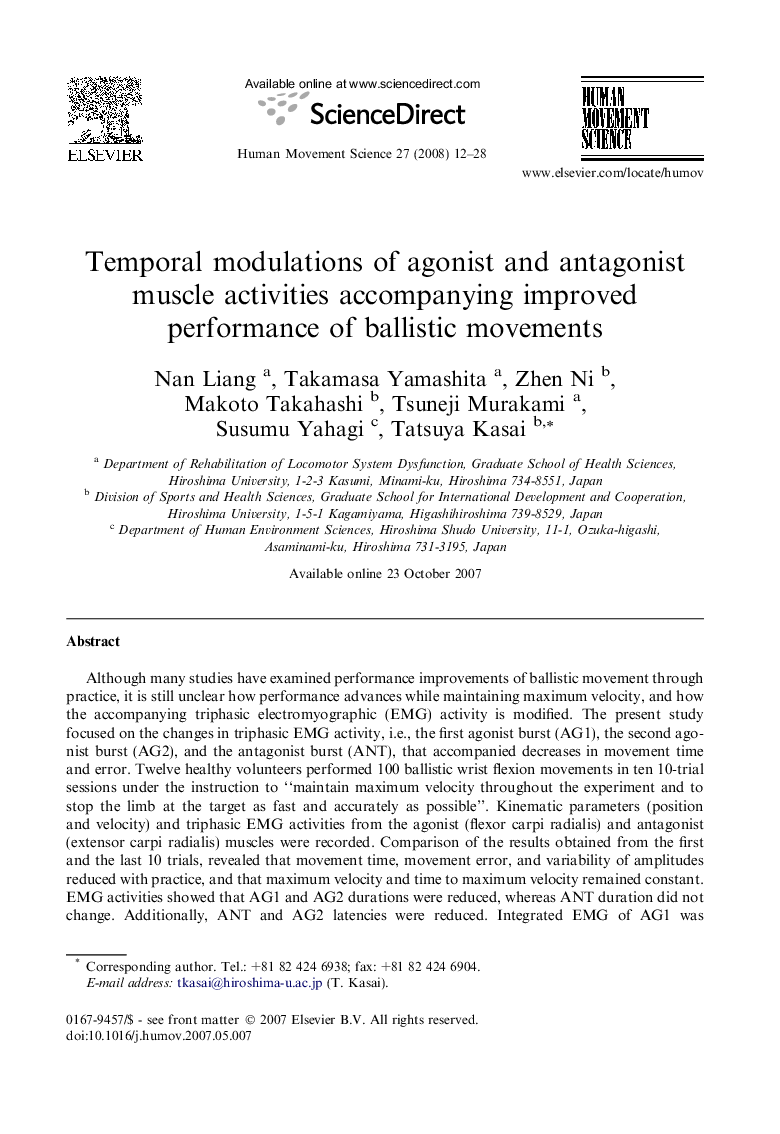| کد مقاله | کد نشریه | سال انتشار | مقاله انگلیسی | نسخه تمام متن |
|---|---|---|---|---|
| 928619 | 922377 | 2008 | 17 صفحه PDF | دانلود رایگان |

Although many studies have examined performance improvements of ballistic movement through practice, it is still unclear how performance advances while maintaining maximum velocity, and how the accompanying triphasic electromyographic (EMG) activity is modified. The present study focused on the changes in triphasic EMG activity, i.e., the first agonist burst (AG1), the second agonist burst (AG2), and the antagonist burst (ANT), that accompanied decreases in movement time and error. Twelve healthy volunteers performed 100 ballistic wrist flexion movements in ten 10-trial sessions under the instruction to “maintain maximum velocity throughout the experiment and to stop the limb at the target as fast and accurately as possible”. Kinematic parameters (position and velocity) and triphasic EMG activities from the agonist (flexor carpi radialis) and antagonist (extensor carpi radialis) muscles were recorded. Comparison of the results obtained from the first and the last 10 trials, revealed that movement time, movement error, and variability of amplitudes reduced with practice, and that maximum velocity and time to maximum velocity remained constant. EMG activities showed that AG1 and AG2 durations were reduced, whereas ANT duration did not change. Additionally, ANT and AG2 latencies were reduced. Integrated EMG of AG1 was significantly reduced as well. Analysis of the α angle (an index of the rate of recruitment of the motoneurons) showed that there was no change in either AG1 or AG2. Correlation analysis of α angles between these two bursts further revealed that the close relationship of AG1 and AG2 was kept constant through practice. These findings led to the conclusion that performance improvement in ballistic movement is mainly due to the temporal modulations of agonist and antagonist muscle activities when maximum velocity is kept constant. Presumably, a specific strategy is consistently applied during practice.
Journal: Human Movement Science - Volume 27, Issue 1, February 2008, Pages 12–28